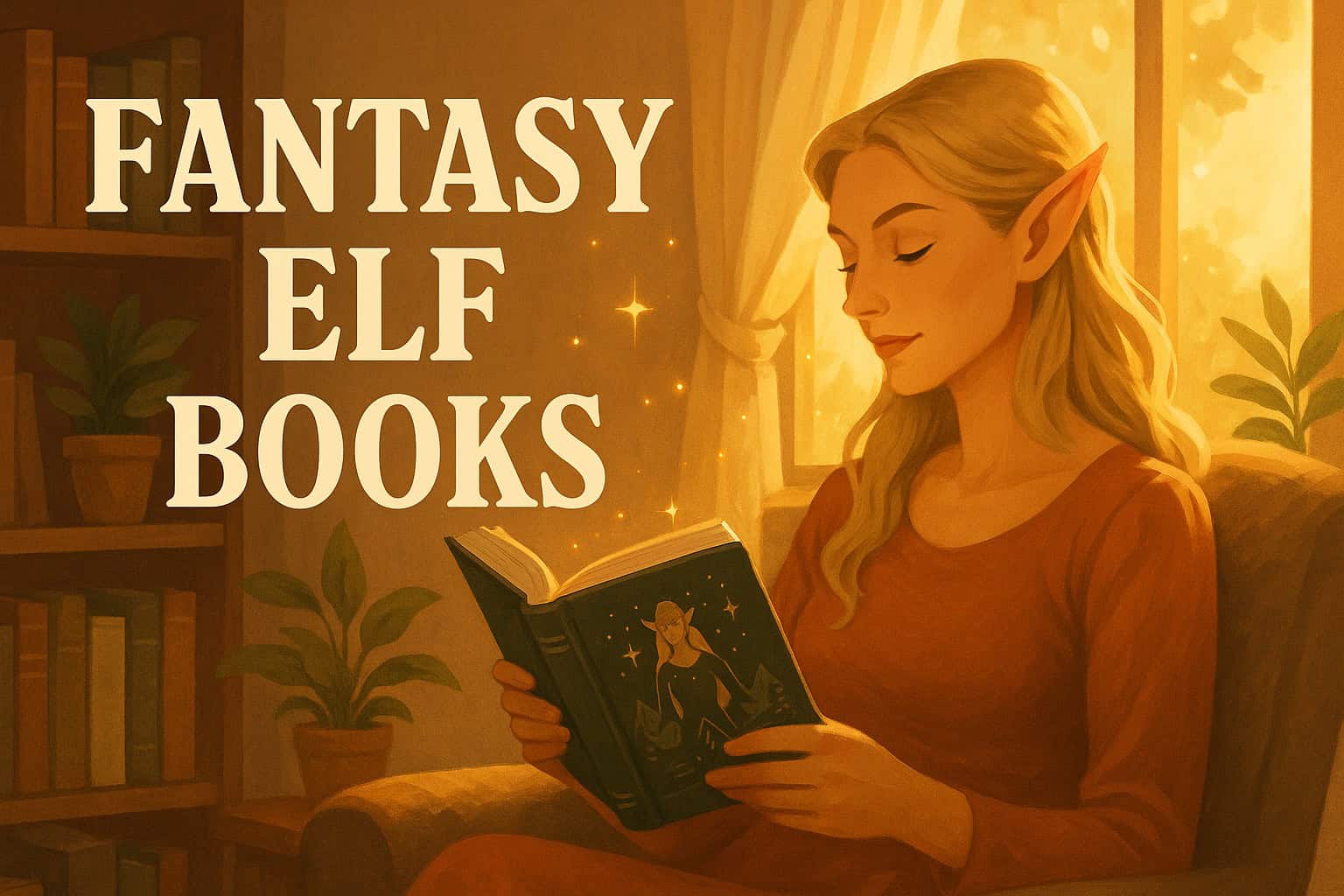Finding great fantasy elf books can be tricky, especially when you want magic, humor, and a memorable story. Goodreads has a popular shelf called “Elf Fantasy Books,” where thousands of readers rate their favorite elves in fiction.
In this post you’ll find the top 10 fantasy elf books to charm and amuse your imagination in 2025. Get ready for tales that enchant and excite!
Key Takeaways
Fantasy elf novels coming in 2025 blend sharp humor and captivating magic—delivering readers loads of laughs and exciting, magical adventures.
Author Stan Nicholls turns the fantasy genre upside down in his Orcs Series, making orcs the heroes—not villains—and offering readers an unexpected, refreshing twist.
Markus Heitz builds two distinct fantasy settings: one features brave, adventurous dwarves in “The Dwarves”, while the other centers around dark and ruthless elves in “The Fury of the Alfar”.
“The War of the Spider Queen” series includes six separate authors, each author exploring political struggles among dark elves, after their goddess, Lolth, suddenly goes quiet.
Many of these stories break outdated elf stereotypes—portraying elves as deeper, layered individuals beyond just good or evil.
Table of Contents
The Orcs Series by Stan Nicholls
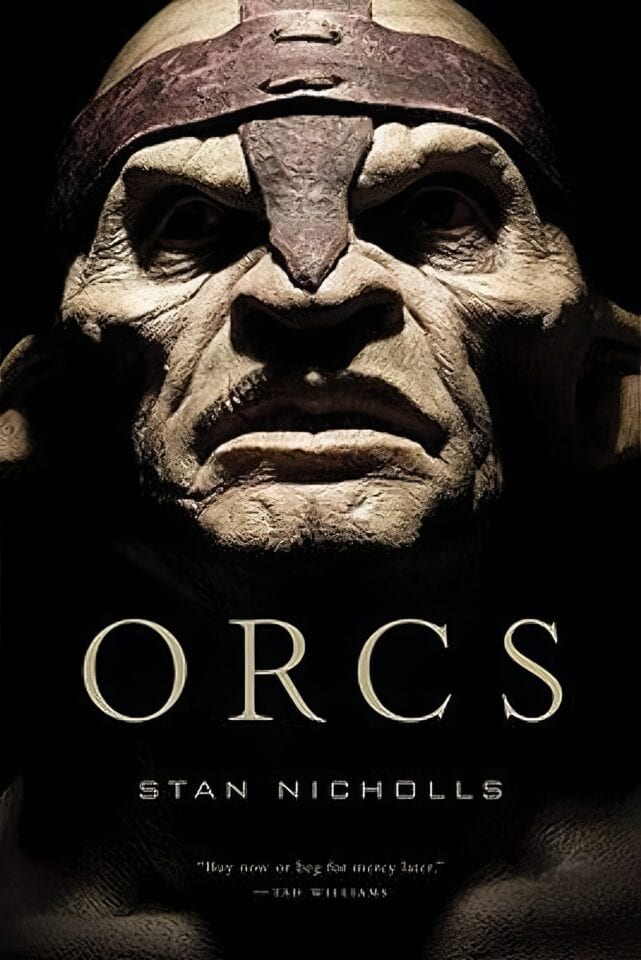
Stan Nicholls flips fantasy on its head with orcs as the heroes in this action-packed series. You’ll root for Stryke and his warband as they battle through a world where humans are the true monsters.
Brutal Battles & Epic Journeys
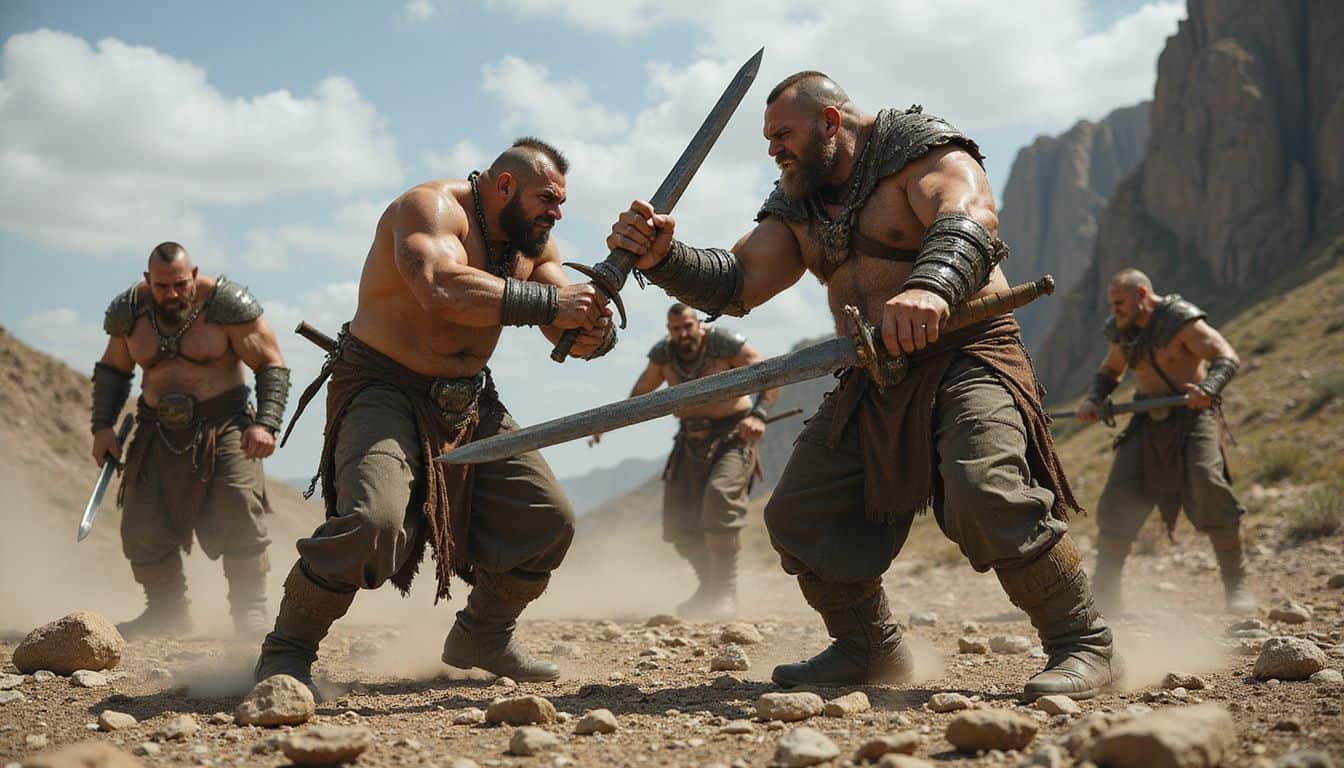 Orc warriors clash fiercely, their battles soaked in blood, rivaling the visual drama of Frank Miller’s “300”. But these fighters aren’t simple beasts—they’re complex heroes struggling to escape the grip of a ruthless human enchantress.
Orc warriors clash fiercely, their battles soaked in blood, rivaling the visual drama of Frank Miller’s “300”. But these fighters aren’t simple beasts—they’re complex heroes struggling to escape the grip of a ruthless human enchantress.
Pages burst with wild action scenes: swords swing fast, axes crash down hard, and defiant cries echo across fantastic, vivid landscapes.
The warriors journey across risky lands filled with threats, where loyalty and courage prove just as vital as raw strength. Female readers will love how the story flips classic fantasy roles upside down, making once-villainous orcs into heroes worth cheering for.
The graphic novel doesn’t shy away from the brutal truths of war—but it still slips in surprising moments of friendship and honor shared among tough, tested soldiers.
Redefining Orcs: Heroes, Not Villains
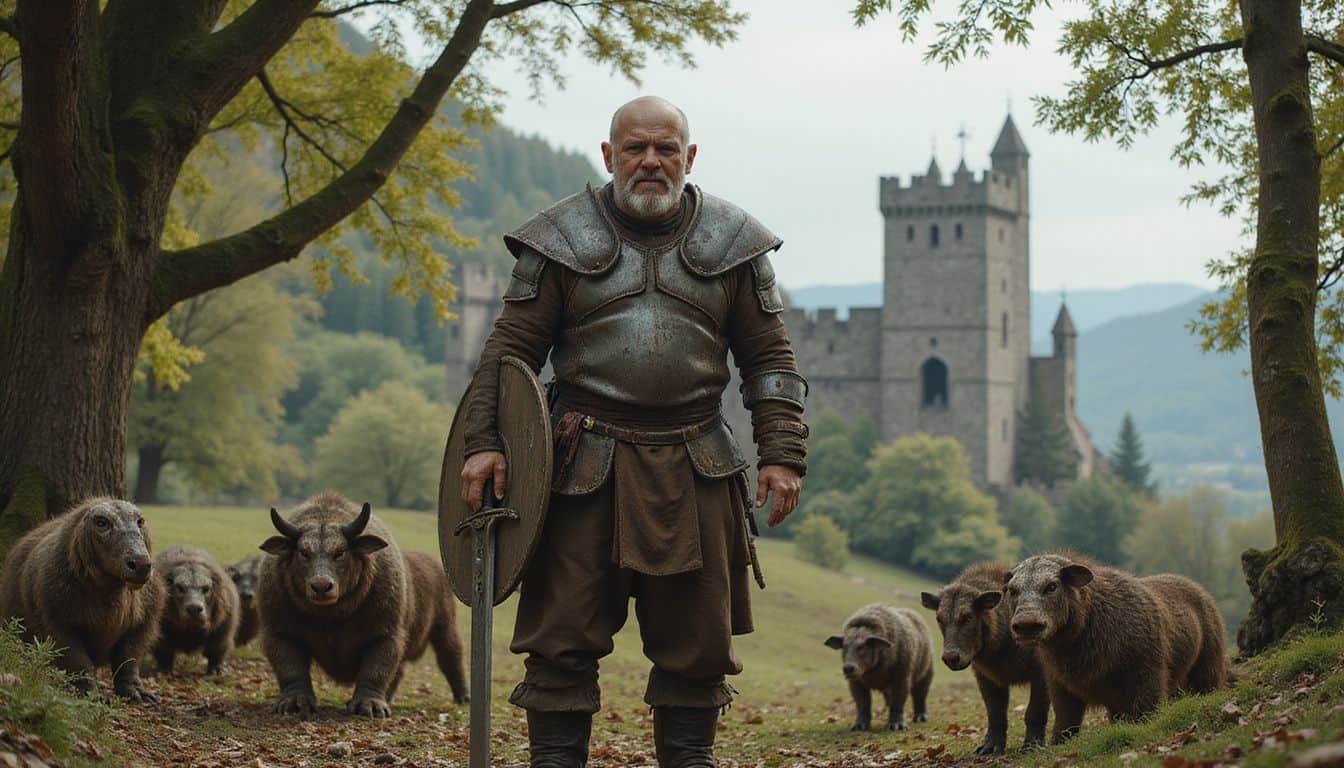
Stan Nicholls’ bold fantasy series brings orcs out of the shadows and into hero roles. These green-skinned warriors battle bravely for survival and justice—not simply for bloodshed.
The stories flip old stereotypes upside down, giving orcs hearts, minds, personal values, and deep emotions. No longer dull monsters from Tolkien-like stories, these characters have hopes and dreams much like ours.
This omnibus includes four gripping tales that make readers cheer for misunderstood creatures. I caught myself rooting passionately for the orc squads as they faced tough decisions and dangerous threats.
The battles offer urgent intensity, far surpassing mindless violence. In a fresh twist, dark elves and humans often show up as villains, shifting roles from familiar childhood stories.
Nicholls’ series genuinely transforms our perception of these traditionally hated beings in fantasy fiction.
The Dwarves by Markus Heitz
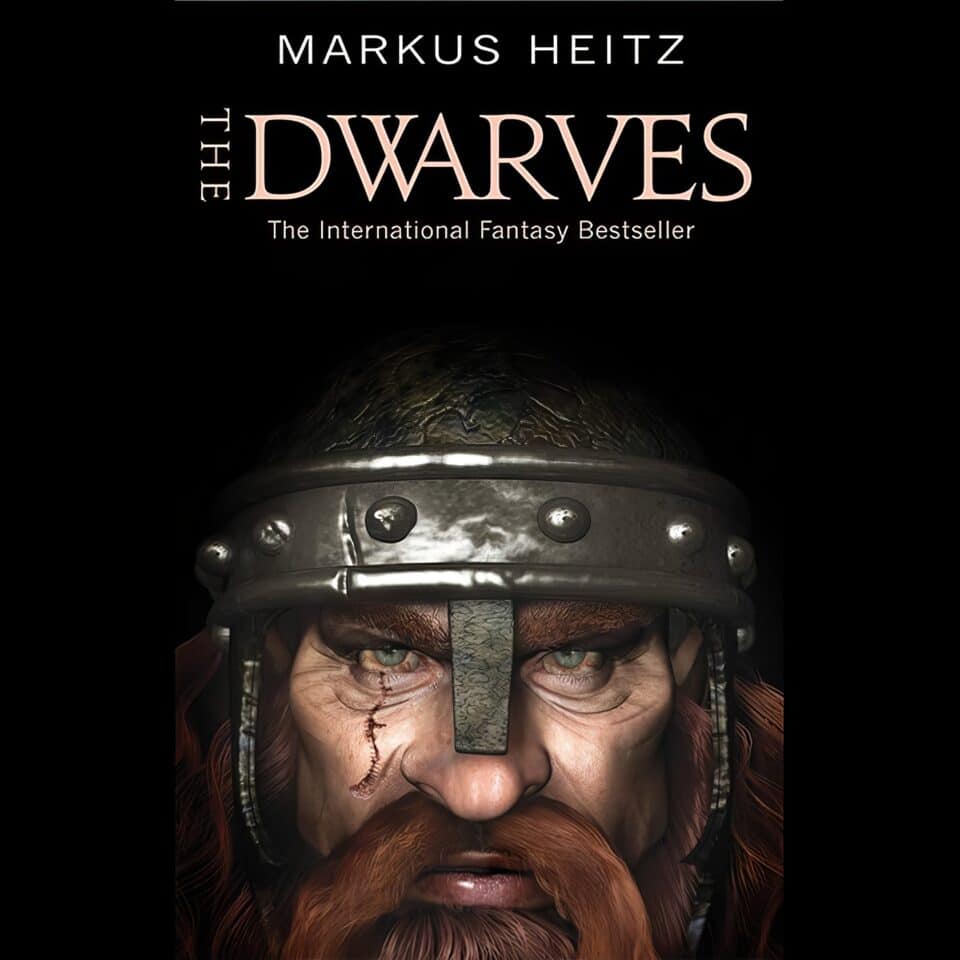
Markus Heitz’s novel, “The Dwarves”, pulls you into a gritty underground land filled with tough, bearded warriors battling for survival. The story centers on Tungdil Goldhand—a dwarf brought up by humans—who must now accept his true roots. Tungdil faces a powerful evil threatening all five dwarf kingdoms, forcing him to become the hero his people need.
Adventure into Stone and Steel
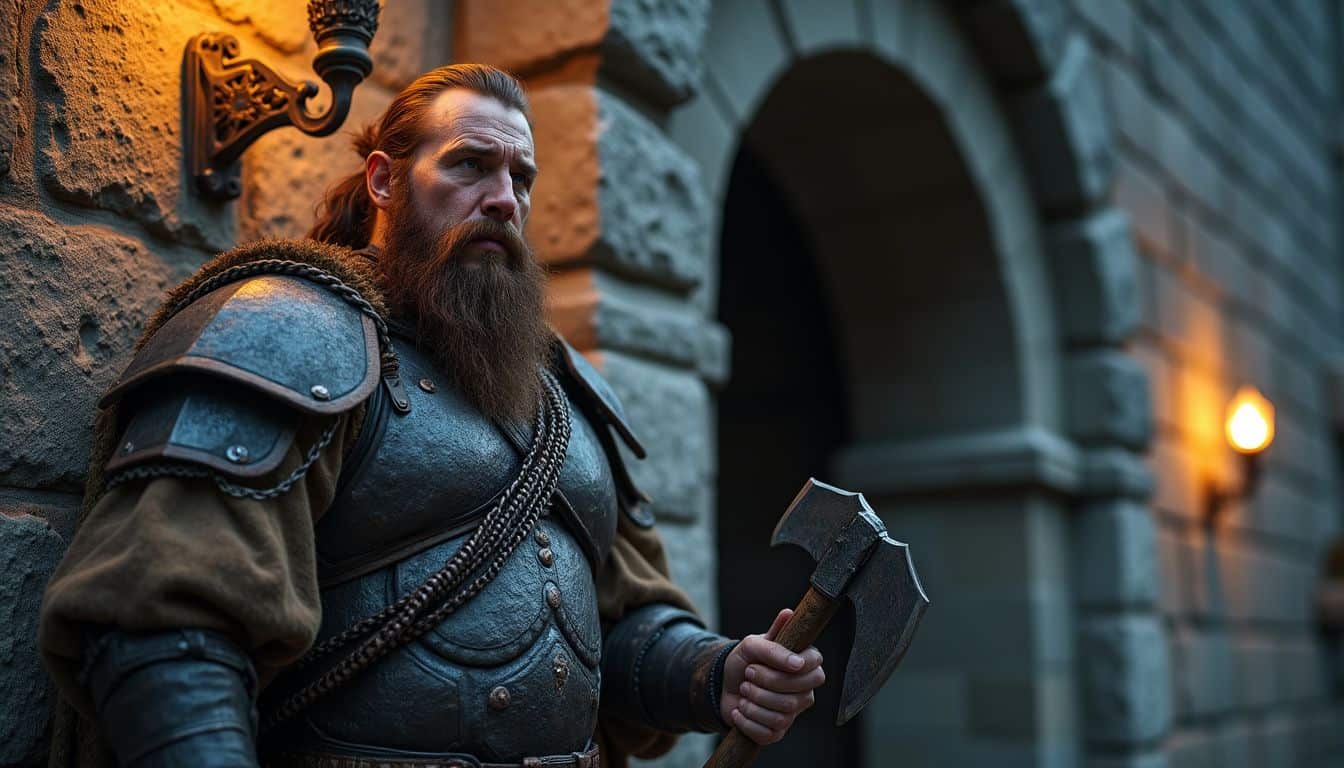
The Dwarves by Markus Heitz pulls you into rocky tunnels and iron-built fortresses. My heart started pounding as the brave dwarves from the Fifthling Kingdom stood ready at the stone gateway to Girdlegard.
These little yet fierce warriors face dangers so big, any human would scream and run—you’ve got to admire their courage! Plus, this book feels solid, weighing a sturdy 1.4 pounds in your hands.
Stone walls do not a prison make for those with dwarvish blood. They are home, hearth, and shield against the darkness that lurks beyond.
If you liked Middle-earth or Lord of the Rings, you’ll feel at home in these stone halls—but there’s plenty of fresh adventure, too. High elves drop in briefly at key points, though the dwarves truly own center stage with bravery and sharpened axes.
Unlike Tolkien’s dwarven clans, these heroes offer a deeper cultural flavor beyond chasing treasure and acting irritable. You’ll laugh along with their witty banter, shed tears over painful losses, and clap loudly as these bold champions challenge enemies ten times bigger than themselves.
Bold Characters, Boundless Courage

Stepping away from steel and stone, readers encounter characters bursting with courage and spirit. Tungdil proudly stands as the lone dwarf living with humans, crafting his own identity through his hammer—and pure bravery.
His quest demonstrates boldness and resilience, especially against challenges that feel overwhelming.
These dwarves aren’t simply fierce fighters—they possess emotional depth and layered reasons driving their actions, drawing us closer to their struggles. Many women readers mention connecting deeply to Tungdil’s sense of being an outsider, and his constant determination to earn acceptance.
The story openly portrays moments of fear along with courage, creating heroes who seem genuinely human, despite their fantasy surroundings. Each character confronts decisions that test physical strength alongside their sense of right and wrong.
The Fury of the Alfar by Markus Heitz
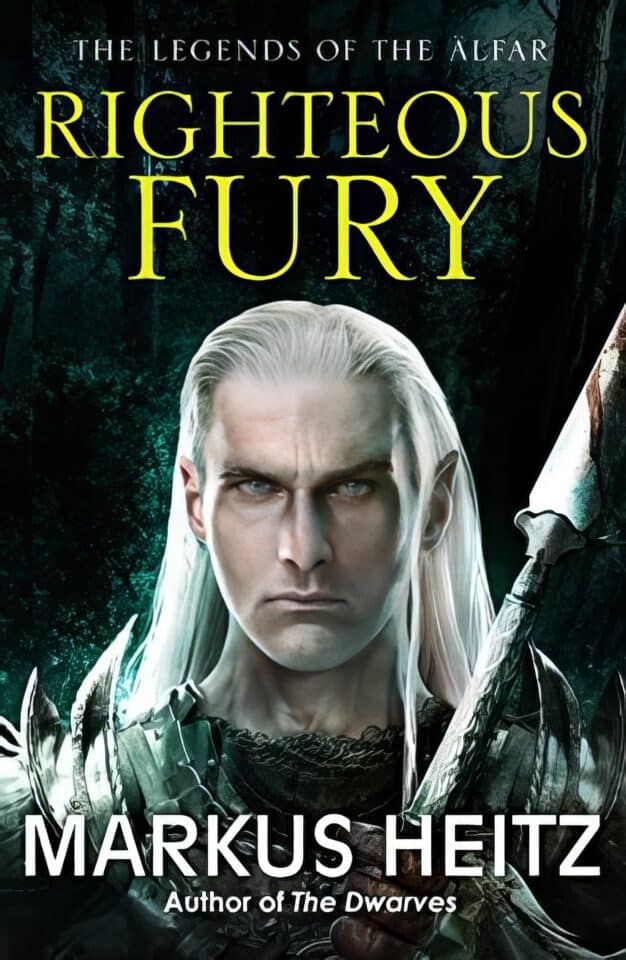
The Fury of the Alfar throws readers into a dark world where elves are not the gentle forest dwellers we expect. Markus Heitz crafts cruel, cunning dark elves who scheme and battle across a rich fantasy landscape that will keep you turning pages late into the night.
Darkness Unleashed
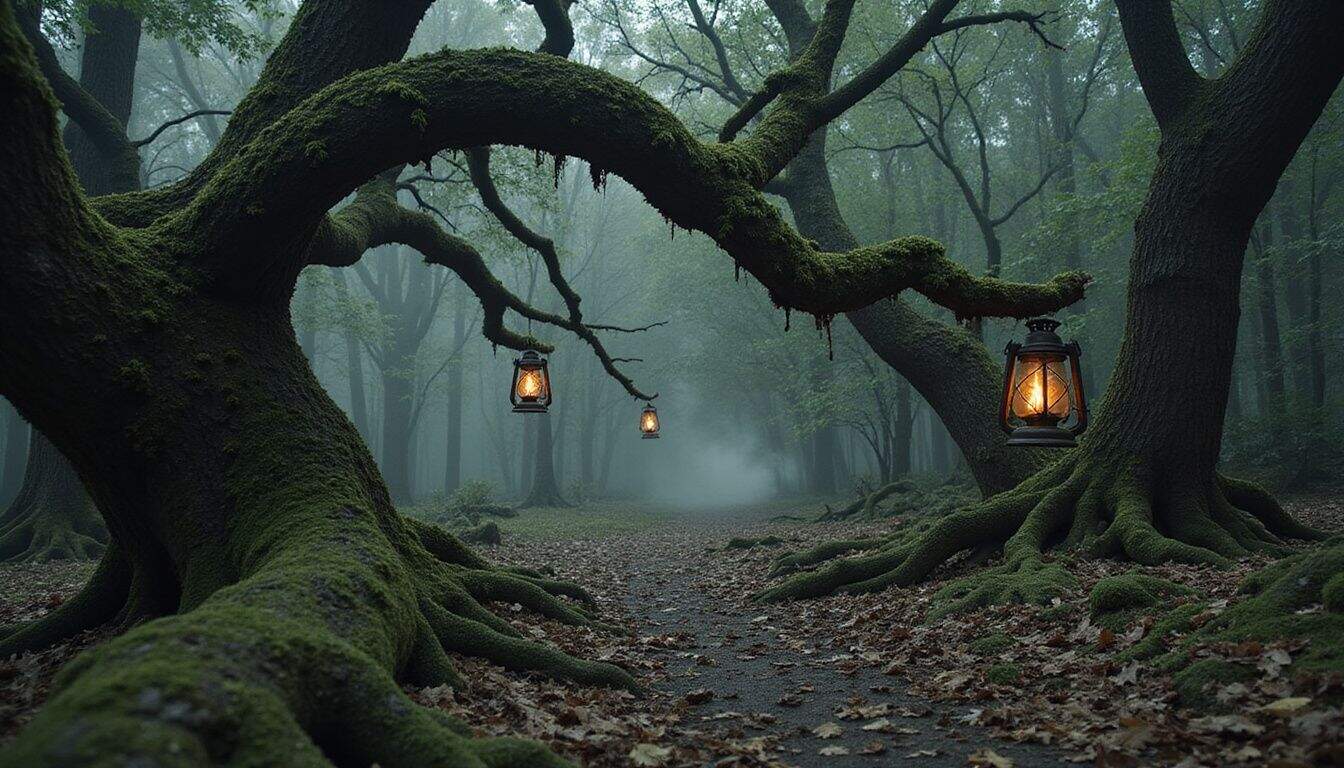
The Alfar warriors from Dson Famon deliver a dark fantasy vibe that’ll grab your attention right from the start. Forget those gentle, flower-crowned elves you’ve seen before—these fighters battle with savage precision, sparing no one who dares cross their path.
I found myself glued to pages filled with violent confrontations and twisted power struggles, unable to sleep until dawn.
Things go even crazier with the arrival of a formidable demon—not your average magic mishap but a creature that shakes up the whole storyline. Its presence shifts everything, placing the demon right in the center of the chaos.
Dark spells and cold-hearted strategy from the Alfar craft a fantasy landscape filled with thrills and real danger at every corner. Readers craving darker storylines, filled with sinister elves and intense drama, will thoroughly enjoy a journey free from tired old elf clichés.
Compelling Antiheroes & Shocking Twists
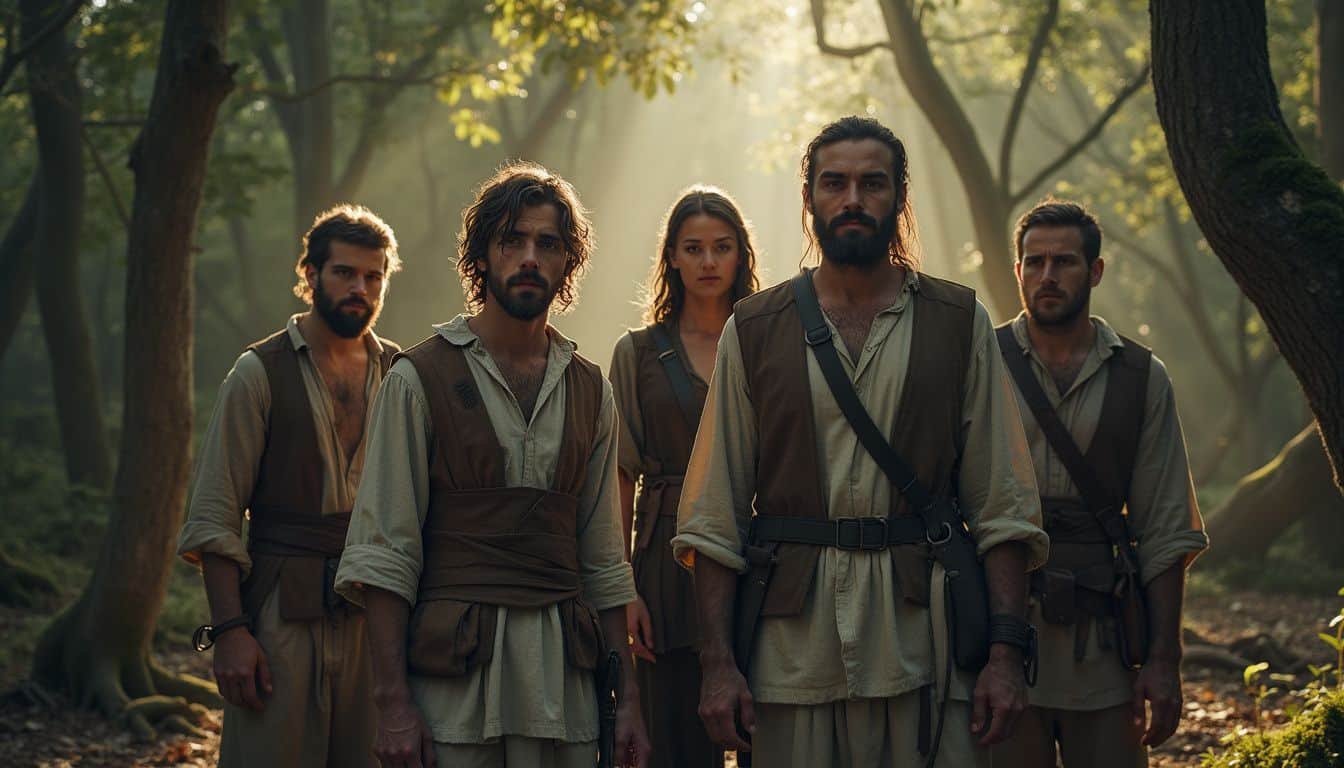
Dark heroes make the Alfar series impossible to put down. Caphalor battles fiercely to defend his empire, driven by determination that’s both gritty and relentless. Sinthoras, meanwhile, carefully plots an epic invasion set to overturn their entire world.
These aren’t familiar, friendly woodland elves—but ruthless, complex beings who blur moral lines with each step.
Evil wears many faces, and sometimes the most beautiful are the most dangerous.
Readers will catch their breath at unexpected twists involving a powerful demon—one neither Caphalor nor Sinthoras anticipates. You’ll find yourself flipping pages quickly, as alliances shift suddenly, and betrayals strike deep.
Tolkien gave us noble elves like Galadriel, known for her wisdom—but these Alfar openly embrace their darker selves. Women readers particularly praise the series: rather than simple battles between good and evil, here we get flawed characters making painful choices we quietly relate to.
Gotrek and Felix Novels by William King
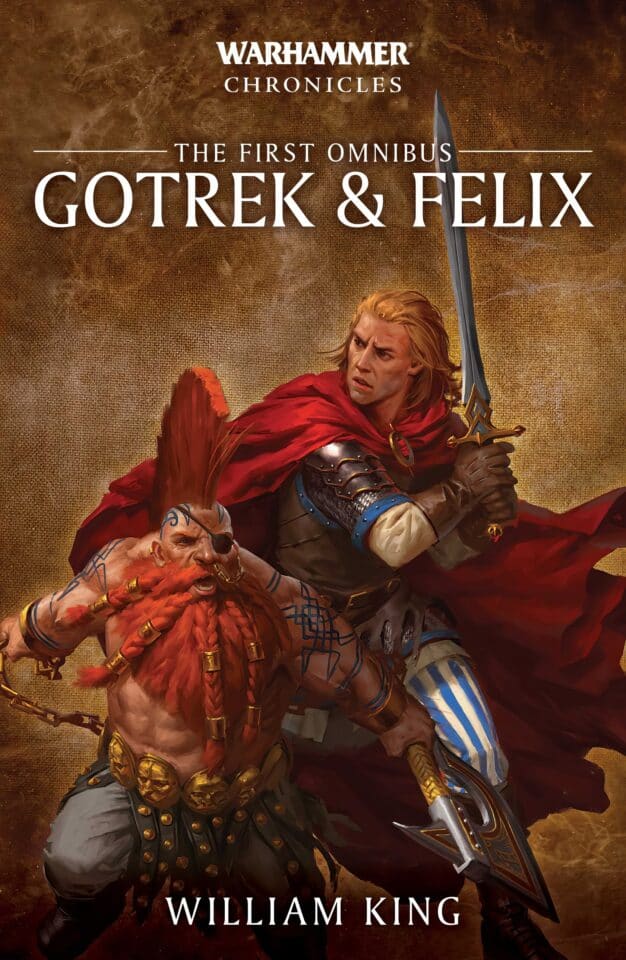
Gotrek and Felix travel through dark forests and monster-filled caves in their quest for glory and death. Their bond grows stronger with each battle, making readers root for this unlikely pair of warriors.
Legendary Duo, Legendary Battles
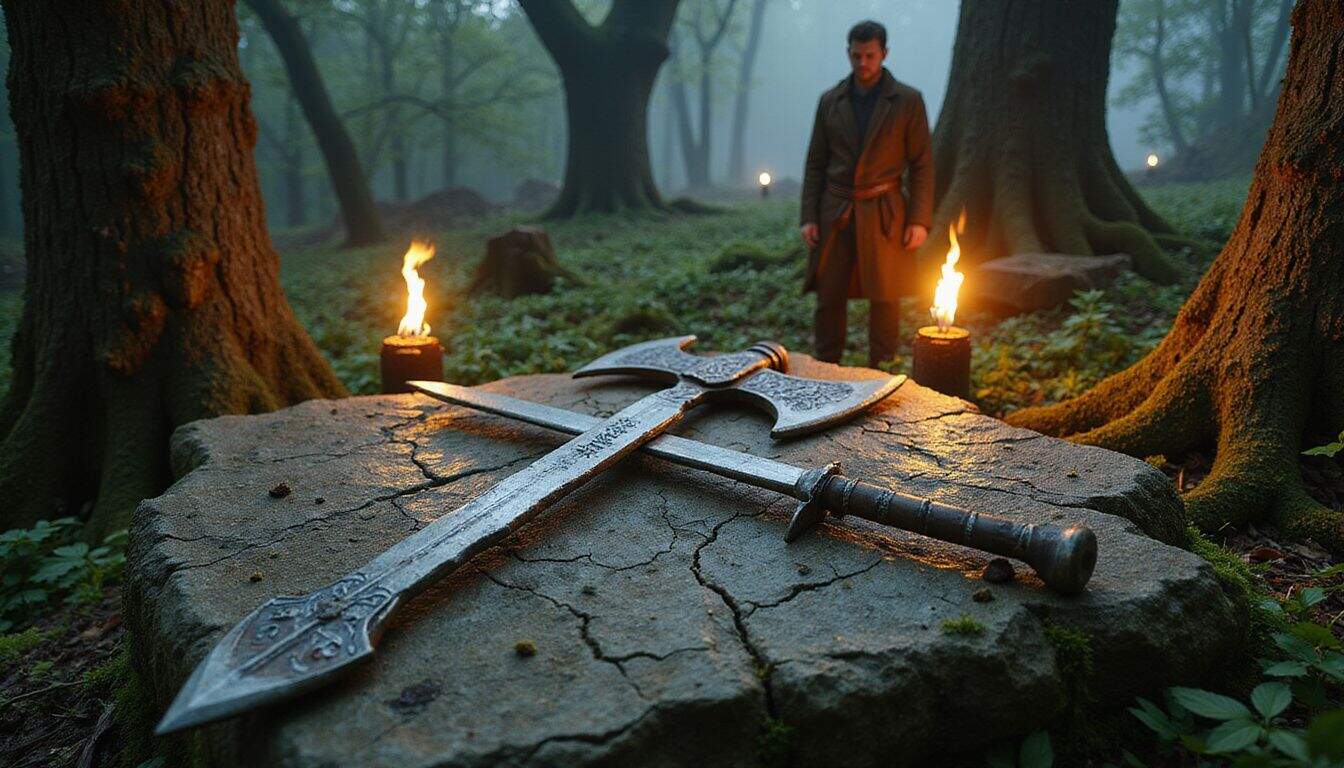
Gotrek Gurnisson and Felix Jaeger make up one of fantasy’s favorite duos. The fearless dwarf slayer searches endlessly for glorious death in battle, while Felix—a clever human poet—writes down their thrilling journeys.
Their adventures send them battling fearsome trolls, sinister vampires, and terrifying chaos warriors, with lively banter and powerful chemistry that leaps off the pages.
Felix’s sharp wit and elegant manner balance out Gotrek’s rough-edged, war-loving attitude, making their exchanges both charming and amusing. The pair delivers non-stop excitement, packed with axe-swinging battles and sword clashes that constantly draw you deeper into their world.
Humor slips between tense action scenes, offering just the right amount of relief from all the blood and gore. Each book keeps you laughing one moment, breathless the next—ideal for anyone who enjoys seeing unlikely friendship triumph against impossible challenges.
Rich Lore & Unforgettable Action
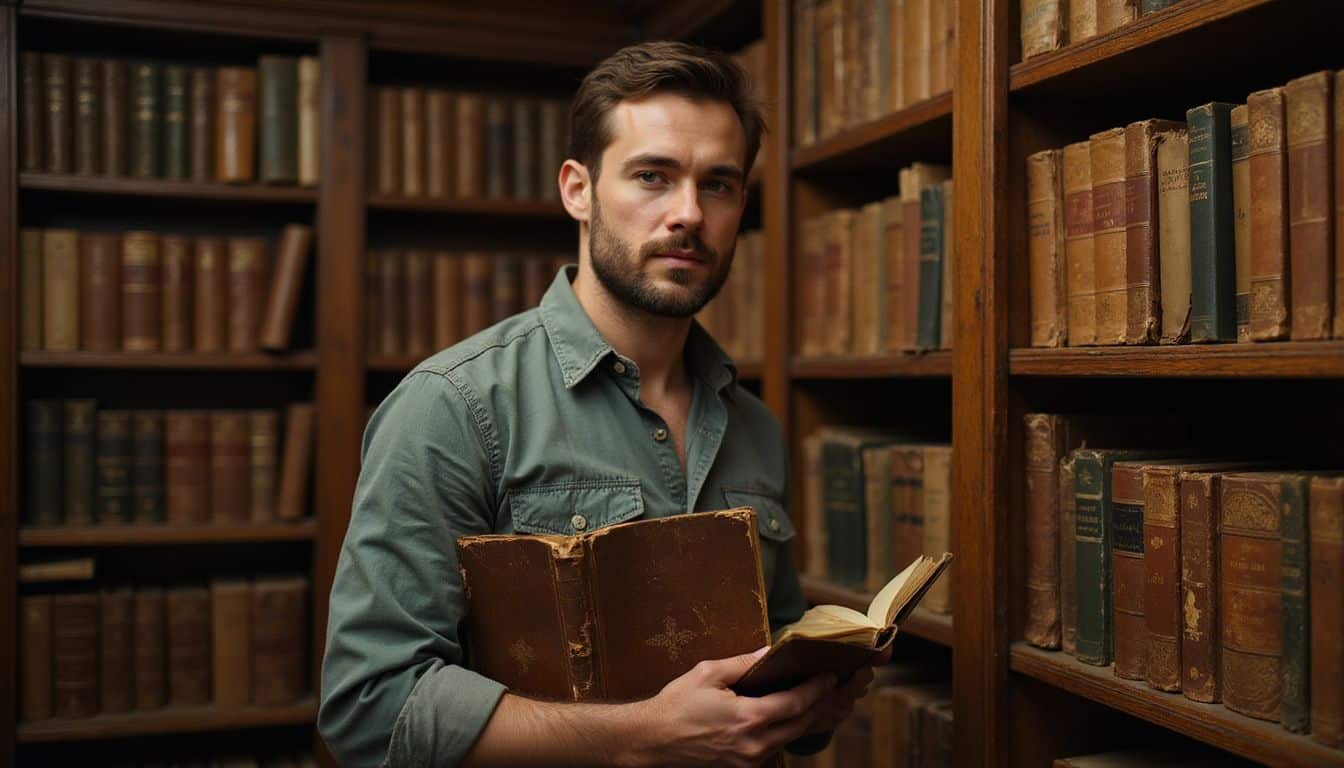
The Warhammer universe bursts to life through gripping battles from the very first page. I spent hours absorbed in Felix’s vivid stories, detailing wild fights against terrifying beasts of chaos and sinister wielders of dark magic.
These adventures mix ancient legends with fresh threats—creating a place that feels at once timeless and brand-new. You’ll be rooting for Gotrek as he fiercely swings his enormous axe, while Felix carefully notes their daring deeds.
Yet, these stories go beyond action alone. They pull you into a complete, vibrant universe—with unique rules, legends, and history. The friction between Gotrek’s fierce warrior spirit and Felix’s thoughtful, scholarly personality adds just the right touch of tension to their journey.
Many nights, I stayed awake far later than planned, desperate to learn whether they’d make it through another brutal encounter. Scenes of battle flow so vividly from the page, you can almost hear swords clanging and sense blood splattering through the air.
The Cleric Quintet by R. A. Salvatore
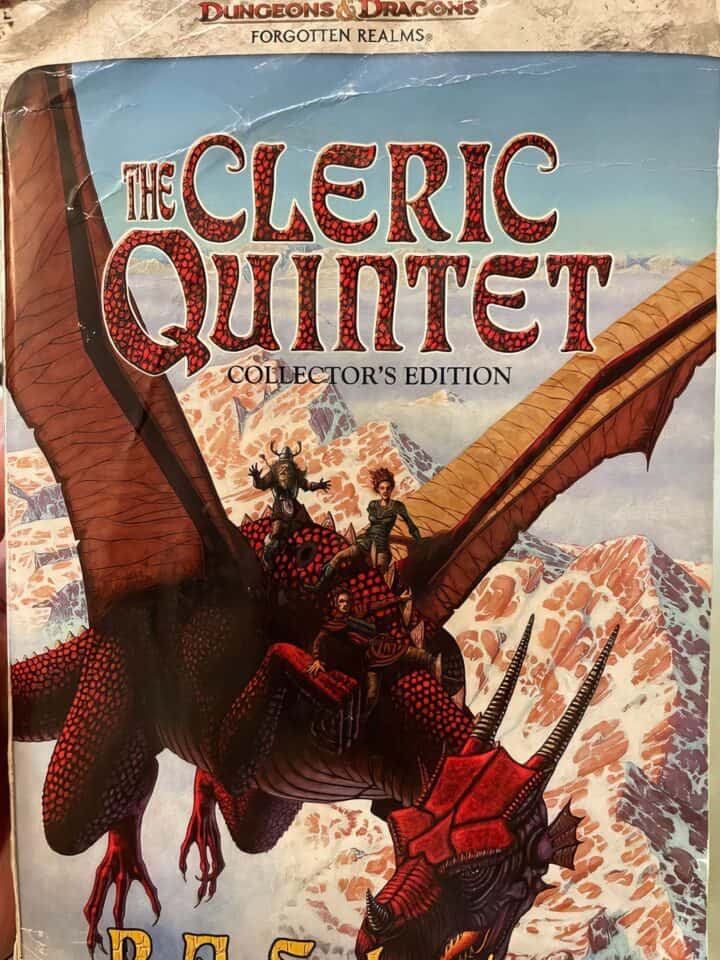
The Cleric Quintet follows Cadderly Bonaduce, a young scholar-priest who faces dark magic and personal demons. R.A. Salvatore blends wit with danger as Cadderly grows from bookish cleric to powerful champion against evil forces.
A Cleric’s Quest & Magical Dangers
Cadderly begins his story as a quiet scholar—but soon finds himself thrown into danger and adventure. Pulled from his peaceful studies at the Edificant Library, this unlikely priest now battles dark magic and deadly enemies, meeting each threat with sharp wit and newfound strength.
His journey winds through ancient ruins and sacred halls, where evil hides in every shadow.
A scholar’s mind paired with a warrior’s heart makes for the most dangerous hero of all.
Magic fills each page, mixing wonder with terror, as Cadderly faces foes beyond normal human limits. Readers witness his clever solutions and deep moral struggles against corruption.
Step by step, spell by spell, battle after battle—Cadderly grows from a shy cleric to a brave hero who stands strong in tough moments. Next: a deeper look at how humor and bravery combine to shape Cadderly into a hero readers won’t forget.
Humor, Heroism, and Clerical Charm
The Cleric Quintet shines with sharp humor and moments that make you laugh out loud—even amid fierce battles. I caught myself laughing at midnight reading “Night Masks”, as the main hero combined clever jokes and magic spells to defeat enemies.
Throughout all five novels (“Canticle”, “In Sylvan Shadows”, “Night Masks”, “The Fallen Fortress”, and “The Chaos Curse”), author R.A. Salvatore pairs thrilling adventures with delightful comedy.
Our cleric hero proves spell-casters can battle evil and still deliver funny punchlines.
Each story blends brave acts with humorous mishaps, making characters seem genuine and relatable. Female readers especially may appreciate the emotional layers behind the humor, as our hero deals with magical threats and inner struggles alike.
He moves from cautious scholar to bold champion through exciting battles and quiet, thoughtful moments. Strong friendships form along the way, showing how real heroism comes from kindness and loyalty—rather than just skill with a weapon.
Up next, we’ll step into the dark intrigue of the Drow, with the gripping “War of the Spider Queen” series.
War of the Spider Queen Series by Various Authors
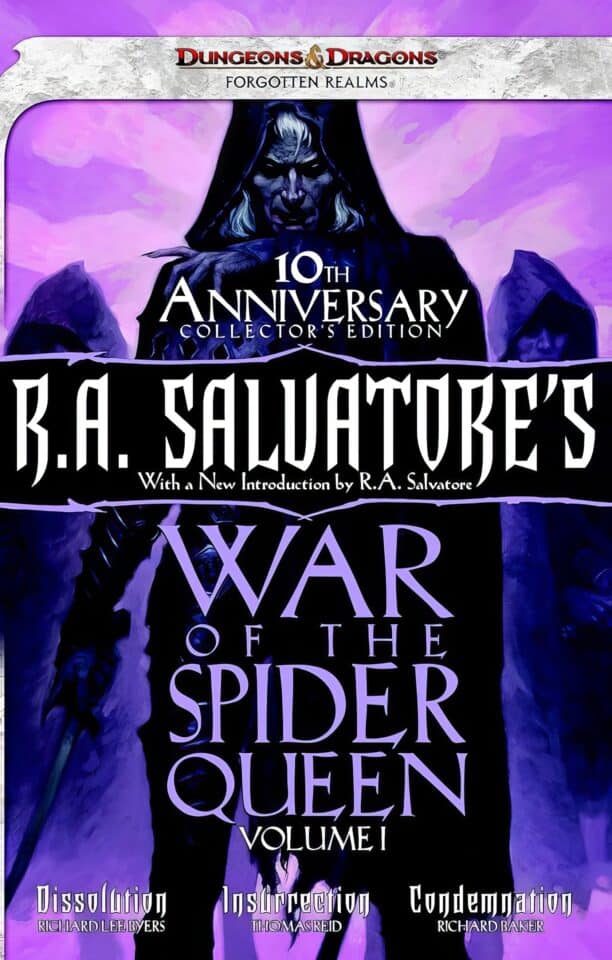
The War of the Spider Queen series pulls readers into the dark world of drow politics and deadly schemes. Lolth’s silence throws the dark elves into chaos as powerful houses battle for control in this six-book saga.
Drow Intrigue & Power Struggles
Dark elves scheme and plot deep within shadowy underground cities. “Dissolution”, the first novel from the War of the Spider Queen series, plunges readers into ruthless drow politics.
In this strict matriarchy, powerful women control every move—and one mistake can cost their subjects dearly. Sisters turn on each other, mothers deceive daughters, and everyone trembles before Lolth—the fearsome spider goddess of their world.
Strangely enough, you’ll feel captivated by these striking yet merciless elves who treasure dominance above everything else.
The series reveals what happens after Lolth suddenly falls silent. Alliances shatter while rival houses wage brutal battles for power. Assassins hide behind every corner, awaiting their moment, and magic-users battle fiercely to secure influence.
Each character faces hard choices between selfish ambition and rare glimpses of trust. Even within this ruthless society, some connections still hold meaning.
A Multi-Voiced Saga of Treachery
The War of the Spider Queen series pulls you deep into twisted drow politics. Six talented authors weave together this shadowy tale, each adding their own unique style to the underground power games.
Betrayals and schemes erupt at every corner beneath the surface city of Menzoberranzan, making me gasp in surprise more than once. Female drow priestesses ruthlessly run things, while male warriors quietly plot in hidden corners.
In these books, treachery flows freely—alliances form and crumble in mere moments. The authors openly show the cruel truth of drow culture, where trust equals weakness and power rules supreme.
Magic spells and fight scenes explode vividly across every page, keeping me up late, eager for more. After reading this series, elves will never seem the same to you again. Next time, we’ll talk about Winterbirth by Brian Ruckley—a harsh tale set amid icy battles and grim realities of war.
Winterbirth by Brian Ruckley
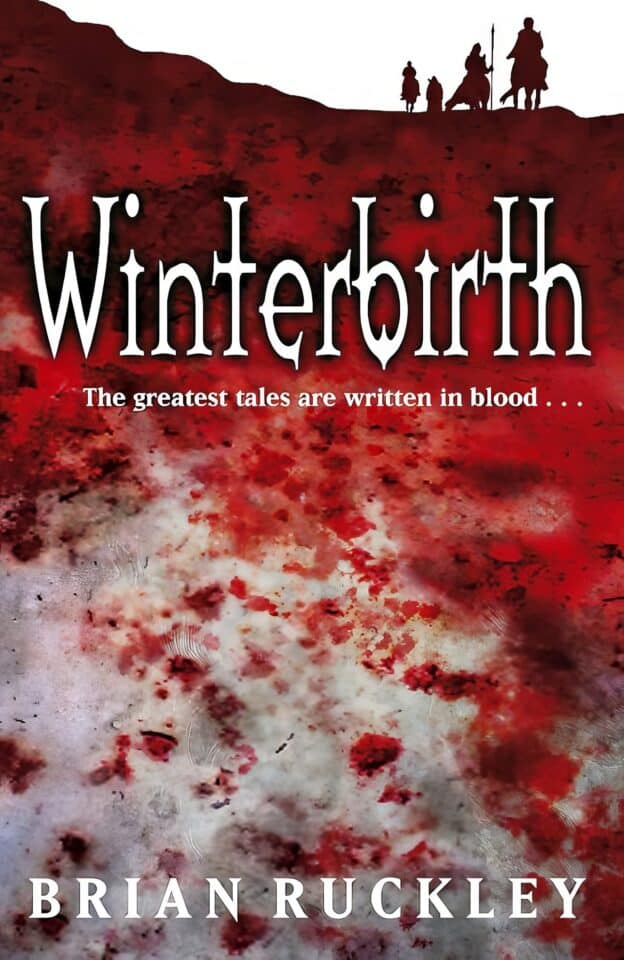
Winterbirth plunges readers into a harsh world where clans battle across snow-covered landscapes and ancient blood feuds never die. Brian Ruckley crafts a tale that feels real despite its fantasy setting, with characters who face tough choices and even tougher enemies.
Grim Realities of a Frozen War
Brian Ruckley’s “Winterbirth” thrusts readers into a harsh world of icy steel and blood-stained snow. He holds nothing back, vividly showing how the True Bloods struggle to keep a fragile peace, even as the Black Road armies storm toward the south.
Reading about warriors slashing through blizzards with frost-coated swords gave me goosebumps. The freezing cold is alive—almost its own villain, deadlier than any soldier out there.
The war feels raw and gritty, with none of the usual romantic glamor. Even the women face brutal choices in this frozen battle, fighting relentless foes and nature itself. Ruckley paints survival as messy and harsh, where no one stays innocent.
His striking descriptions drop you into the icy scene, until you feel the wind bite and almost see your own breath fogging up in the freezing air.
Realistic Conflict, Vivid Worldbuilding
Winterbirth pulls readers straight into gritty conflicts that ring true despite its fantasy setting. Author Brian Ruckley crafts battles filled with mud, blood, and heavy losses—instead of relying purely on magical spectacle.
Small, vivid details like the crunching snow under boots and the painful bite of sharp, icy winds bring the frozen landscape to life. During a cozy weekend reading marathon, I completely lost myself in the story, feeling the chill and struggles of war through every vivid page.
The story openly confronts how revenge and betrayal deeply transform people. Characters driven by greed make believable choices, behaving in ways that feel undeniably human. Beyond this, the imagined world stands solid enough to explore, filled with unique histories and fascinating cultures that clearly explain the ongoing battles.
Even fantasy beings like snow elves have motives deeper than simple good-versus-evil clichés—adding richness, depth, and urgency to the tale.
The Outcast Royal Series by Aaron D. Schneider
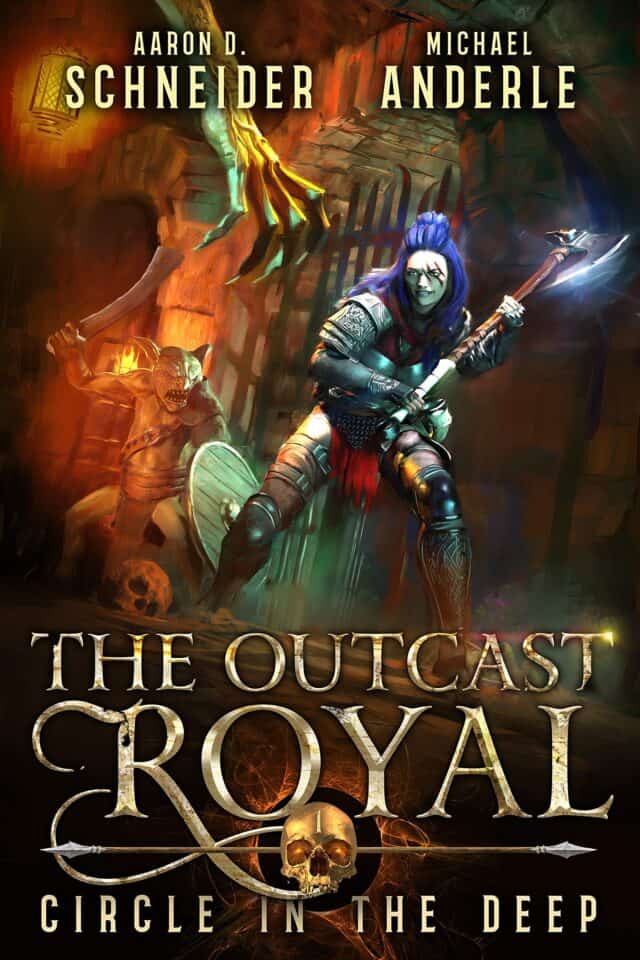
The Outcast Royal Series grabs readers with its mix of palace plots and wild magic. Prince Elian fights for his birthright while hiding his secret elf heritage in a world that hates his kind.
Noble Blood, Outcast Hero
Ax-Wed is a fierce warrior, carrying royal blood and a troubled past she cannot shake off. She battles enemies—and the dark nightmares haunting her sleep. Her tale drags you into a world where personal choices collide with birthright.
You’ll find yourself cheering for this bold heroine as she carves a unique path through danger, politics, and inner turmoil.
Fantasy fans who enjoy redemption arcs will find something special here. Ax-Wed shatters typical elf stereotypes, balancing toughness with challenging moral decisions. Her noble heritage adds tension to every scene, as she rejects royal privilege in search of her own truth.
Readers who love dark romantic fantasy will connect deeply with Ax-Wed’s emotional conflicts and savor the intense fight scenes. Court drama meets battlefield bravery, offering a gripping escape for anyone craving powerful women in fantasy fiction.
Intrigue, Redemption, and Rebellion
Noble blood may run deep—but the road to honor cuts even deeper in this epic adventure. Our hero, an outcast elf, faces sinister plots and dangerous schemes at every turn. Dark alliances quietly form in hidden corners, while enemies boldly hide in plain sight.
Torn by difficult choices, the hero must pick between family loyalty and protecting all elven people.
Court drama collides with street-level rebellion in this fantasy story. The protagonist teams up with surprising allies to battle corrupt rulers. Similar to “Voice on the Wind”, the tale binds gripping intrigue with age-old prophecies that shake entire kingdoms.
You’ll cheer for rebels fighting for freedom and fairness, rather than mere power. The dark curse from “Doom Under the Shadow” resonates throughout these pages, as heroes confront both inner struggles and real-life foes.
The Dwarves of Ice-Cloak by D. P. Prior
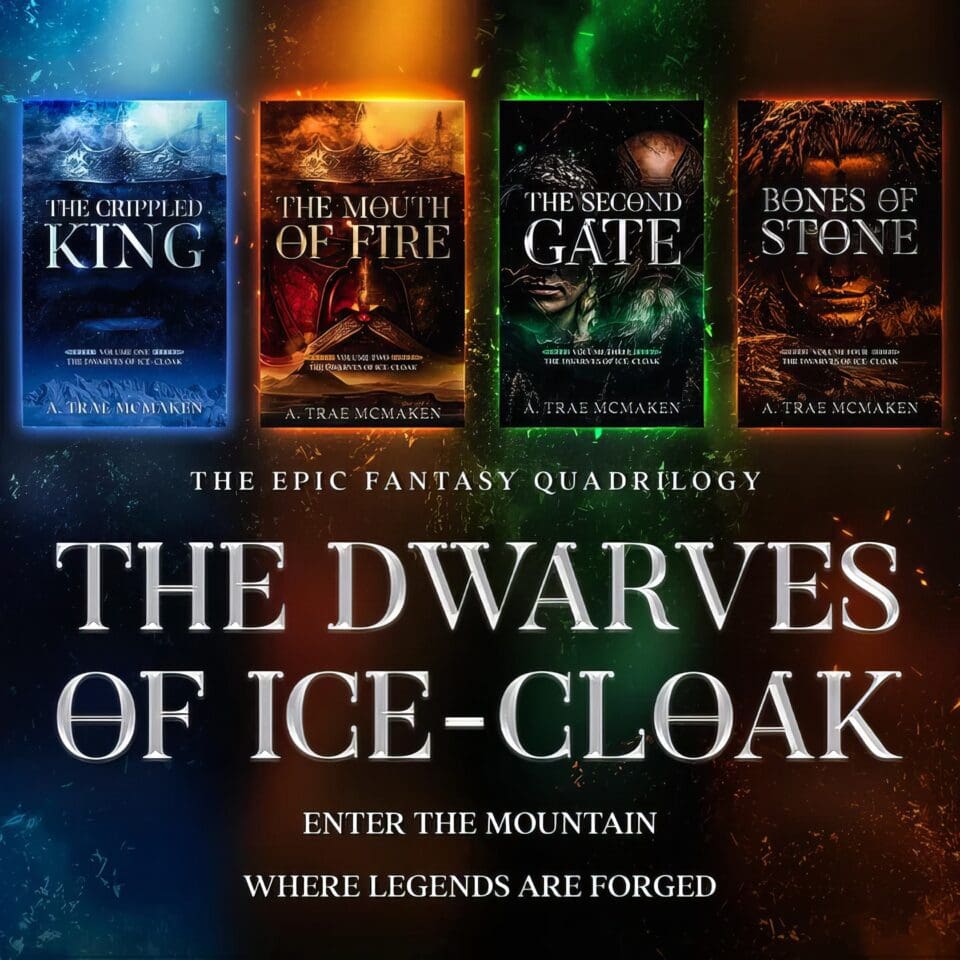
The Dwarves of Ice-Cloak takes readers to a brutal frozen world where sturdy dwarven clans fight daily for survival. D.P. Prior crafts a tale of grit and determination as these short but mighty warriors face threats from both nature and monsters that lurk in the snow.
Frozen Lands, Fiery Hearts
“Ice-Cloak”, by D.P. Prior, sweeps you into a frozen land where staying alive means having grit and guts. Across 370 action-filled pages, brave dwarven fighters carry hearts blazing as hot as any forge fire.
These warriors battle bitter winds and ruthless enemies, all while fiercely guarding their honor.
I first opened this book on a cozy winter getaway last year. Prior’s detailed scenes of icy peaks made me tug my blanket closer, yet the dwarves’ fierce devotion warmed my heart. Women readers will especially enjoy the emotional layers beneath the exciting fights, since the author smoothly blends thrilling action and meaningful character development.
Though dwarves stand shorter than average, they’re giants in bravery and passion—ready to tackle even the toughest odds.
Survival Against Impossible Odds
From frozen wastelands come stories of dwarves whose hearts blaze with courage. D.P. Prior’s “The Dwarves of Ice-Cloak” throws readers into brutal survival scenes that’ll keep your eyes glued to every page.
At every step, the dwarves confront threats—raging blizzards, dwindling food supplies, and hidden predators in icy shadows. Several moments left me breathless, as characters faced split-second, life-and-death choices.
These tales hit harder because of the truly difficult odds. Characters don’t turn to easy magic or effortless escapes. Instead, strength, teamwork, and painful sacrifice carry them forward.
In extreme conditions, the book reveals the good and bad sides of people vividly. One dwarf might betray allies for just one more day of warmth, while another gives away their final bite of food to help a friend live.
That harsh fight against nature, betrayal, and desperation makes the story gripping and real, even with its fantasy setting. Released in March 2023, this book creates heroes who must battle more than monsters—they must endure the brutal struggle to survive.
The Dwarvish Dirty Dozen by Derek Prior
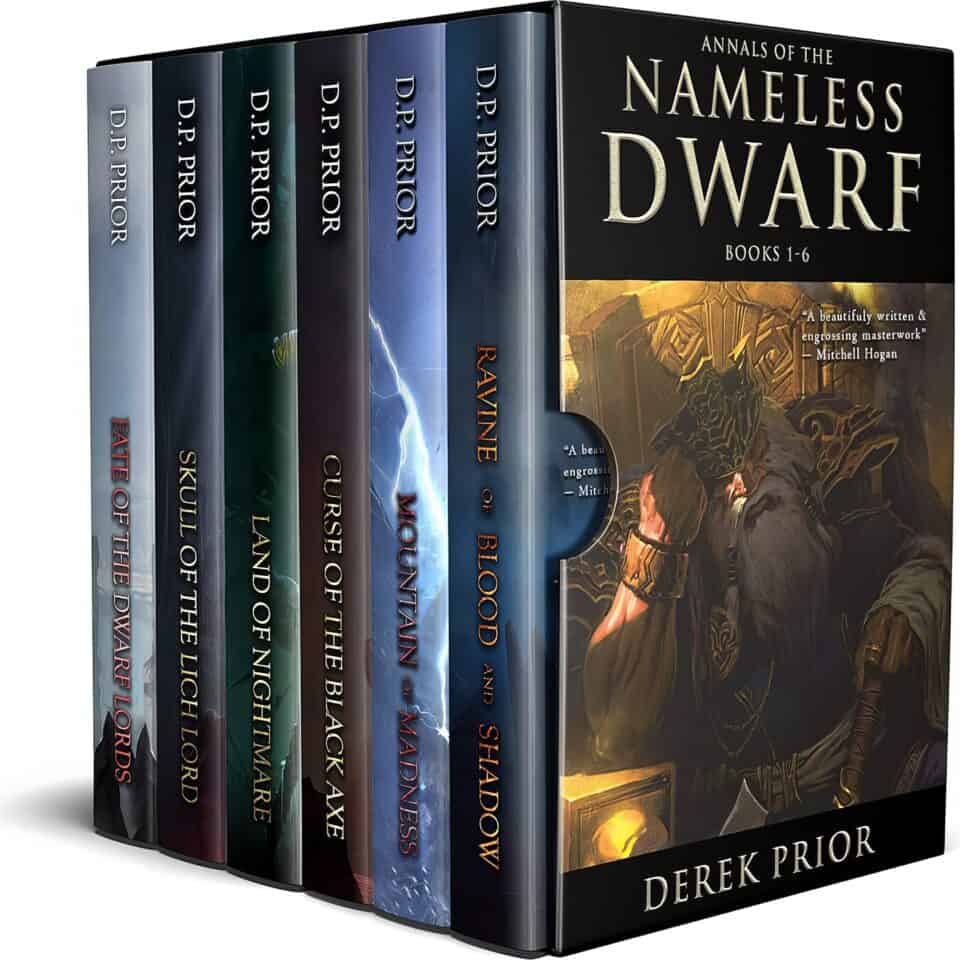
The Dwarvish Dirty Dozen packs a punch with its band of disgraced dwarves facing a suicide mission against impossible odds. Prior’s gritty tale mixes battle scenes with belly laughs as these bearded warriors find redemption through blood, ale, and unexpected friendship.
Disgraced Heroes & Dangerous Missions
In “The Dwarvish Dirty Dozen”, you’ll find a group of misfit dwarfs that no one else wants. These warriors wear their shame like heavy armor—but they alone have the courage for missions everyone else fears.
Each dwarf battles horrifying monsters, but also their own inner struggles, pushing through past mistakes and regrets. Their painful histories make their bravery stand out even more, especially as they tackle impossible challenges.
The book blends gritty action scenes with funny, memorable moments between fights, keeping you entertained all the way through. You’ll admire how these rough fighters form strong friendships and bonds even with all their flaws and mistakes.
Imagine “The Expendables”, but with axes, beards, and way more laughs—the dwarfs keep things lively between bloody battles. It highlights that true heroes aren’t flawless; they’re just gutsy enough to get up after they’ve fallen flat.
Fans who enjoy darker fantasy romances will appreciate watching these broken-but-brave dwarfs rediscover meaning through friendship, loyalty, and fresh beginnings.
Humor, Brotherhood, and Unexpected Valor
Derek Prior’s Dwarvish Dirty Dozen entertains readers with heartwarming humor and genuine bonds. Its playful jokes mix perfectly with the deep friendships of tough, stubborn dwarves.
One moment you’ll laugh out loud, and the next, you might feel moved by their loyalty. Prior borrows ideas from beloved fantasy novels and familiar movies, making a world where unlikely heroes rise from teamwork and trust.
On the outside, these dwarves appear gruff and moody—but beneath the surface, they have brave hearts ready for danger. The stories center on a group of misfits who bravely confront terrifying challenges despite their fears.
Hope and second chances appear throughout each adventure, as selfish loners slowly form a caring family. Female readers often enjoy the careful balance between exciting action scenes and emotional character growth, turning these fantasy stories into something deeper than sword battles and quests.
How Will Elf Fantasy Books Evolve in 2025?
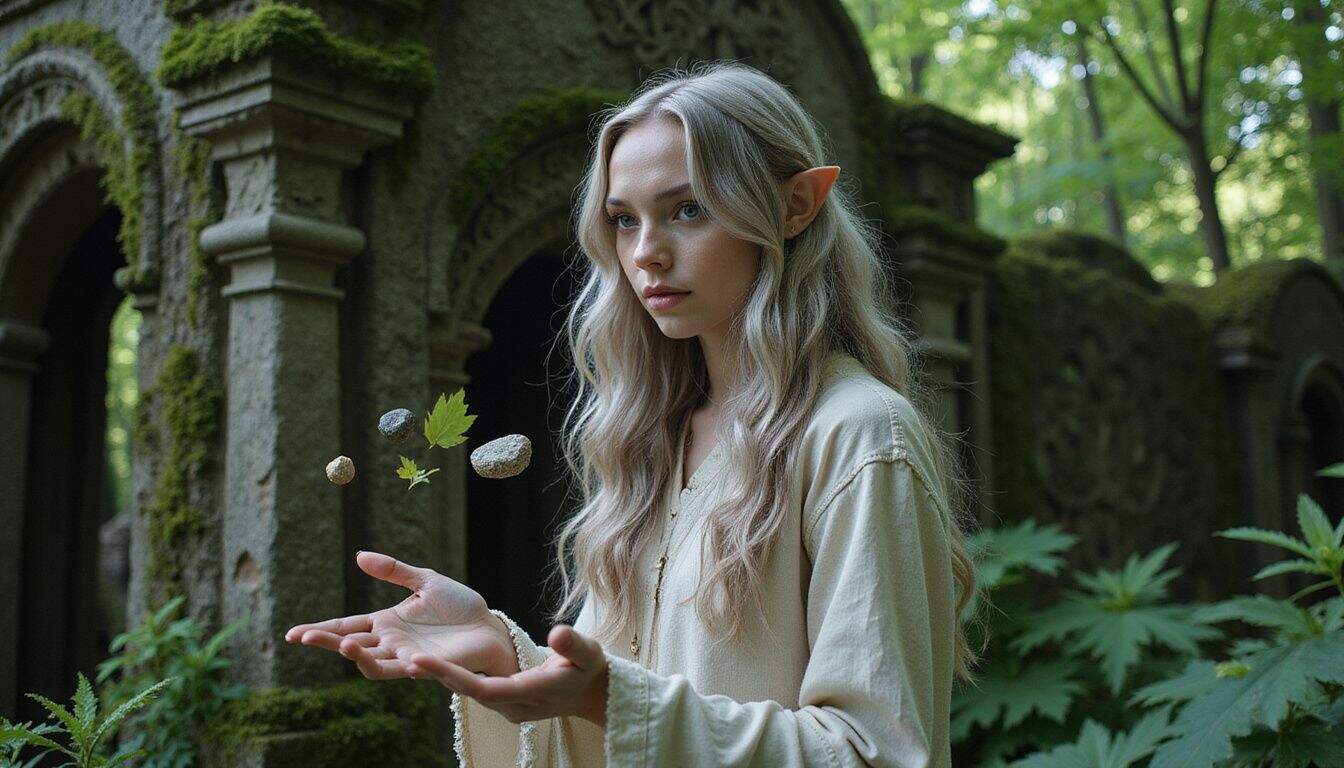
Elf stories in 2025 will shift sharply into mental powers. Future elves won’t simply shoot arrows—they’ll move objects with thoughts alone, even read minds. Novels will picture these graceful beings adapting easily to new settings beyond their usual forests.
Our favorite elf groups, like the Noldor and Wood Elves, will gain stronger psychic abilities known as “The Sight”. This gift lets them glimpse briefly into future events. I’ve already seen glimpses of this trend popping up in recent fantasy books, where elves began showing slight signs of these mental skills.
Their stunning looks and endless lifespans will take center stage too, in next year’s fantasy stories. Writers will connect the elves’ thousand-year lifetimes directly to their emotional well-being—not only to magical gifts.
Smart, thoughtful elves will replace those wise yet distant figures seen in classic tales, such as the Valinor or The Lord of the Rings elves. These new portrayals will feel more believable, while still preserving their natural magic and charm.
Even my book club started noticing this shift, recently selecting several novels that hint about changes in portraying these pointy-eared favorites.
People Also Ask
What are the most popular elf characters in fantasy books?
Readers often favorite elf characters like Legolas from “The Lord of the Rings”, Drizzt Do’Urden from novels by R.A. Salvatore, or Elrond, who shows up in “The Hobbit” and Tolkien’s other stories. Fans also admire elves like Fëanor from “The Silmarillion”, plus various Night Elves featured in Warcraft lore.
Do the 2025 fantasy books include any romantasy elements with elves?
Yes! Elf stories coming out in 2025 mix fantasy and romance, following popular themes in the romantasy genre. These upcoming titles offer spicy romantic plots and darker fantasy-romance blends, featuring elves involved in intriguing love stories.
Which Tolkien elves might inspire the new 2025 fantasy books?
Popular Tolkien elves—like Círdan the Shipwright and the elves from the Grey Havens—often inspire new fantasy authors. Tolkien’s detailed history of the First Age and his invented elf languages offer tons of creative ideas for fresh elven cultures in storytelling.
Will the 2025 books feature traditional elves or new interpretations?
The 2025 fantasy lineup has both classic elves similar to those seen in “The Rings of Power”, and creative new varieties like Moon Elves or Avariel. Some authors craft totally original elf communities, while others expand worlds readers know, such as Warhammer or the island of Ulthuan.
Are any of the books connected to popular elf stories like The Hobbit?
None of these upcoming books directly follow Bilbo Baggins’ adventures—but several authors draw from Tolkien’s creations like the One Ring and Sauron. Other 2025 titles take inspiration from Terry Brooks’ Shannara series, referencing familiar concepts like the Warlock Lord and the Elfstones.
What makes these 2025 elf books different from older fantasy stories?
These new elf-themed books combine classic fantasy staples—like wizards or the Halls of Mandos—with fresh ideas about elf customs and societies. Instead of simply showing good characters versus dark villains, authors now explore deeper themes and complex elf personalities—such as Zaknafein—set in more detailed worlds than places like The Shire.
References
https://us.macmillan.com/books/9781466804760/orcs/
https://www.goodreads.com/book/show/6930080-inferno
https://www.amazon.com/Orcs-Stan-Nicholls/dp/B08XLJ8WPH
https://www.amazon.com/Dwarves-Markus-Heitz/dp/B007SRW4K2
https://www.amazon.com/Dwarves-Markus-Heitz/dp/0316049441
https://www.goodreads.com/book/show/50147497
https://www.amazon.com/Gotrek-Felix-1-Warhammer-Chronicles/dp/1784967858
http://www.williamking.me/fantasy-books/trollslayer/
https://www.amazon.com/Cleric-Quintet-Collectors-Forgotten-Realms/dp/0786926902
https://en.wikipedia.org/wiki/The_Cleric_Quintet
https://en.wikipedia.org/wiki/War_of_the_Spider_Queen
https://aqsreviews.wordpress.com/tag/quenthel-baenre/ (2017-01-11)
https://www.goodreads.com/book/show/1462020.Winterbirth
https://www.hachettebookgroup.com/titles/brian-ruckley/winterbirth/9780316068062/
https://www.goodreads.com/series/332785-outcast-royal
https://lmbpn.com/lmbpn-books/the-outcast-royal-complete-series-boxed-set/
https://www.amazon.com/Outcast-Royal-Complete-Boxed-Set-ebook/dp/B09KBDY118
https://www.amazon.com/Mouth-Fire-Dwarves-Ice-Cloak/dp/B0BXNBK7ZH
https://www.goodreads.com/author/show/16274181.A_Trae_McMaken
https://www.amazon.com/The-Dwarves-of-Ice-Cloak/dp/B0BKH355TL
https://silverelves.wordpress.com/2018/12/01/what-will-elves-be-like-in-the-future/
